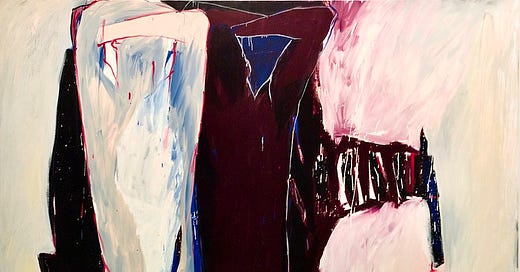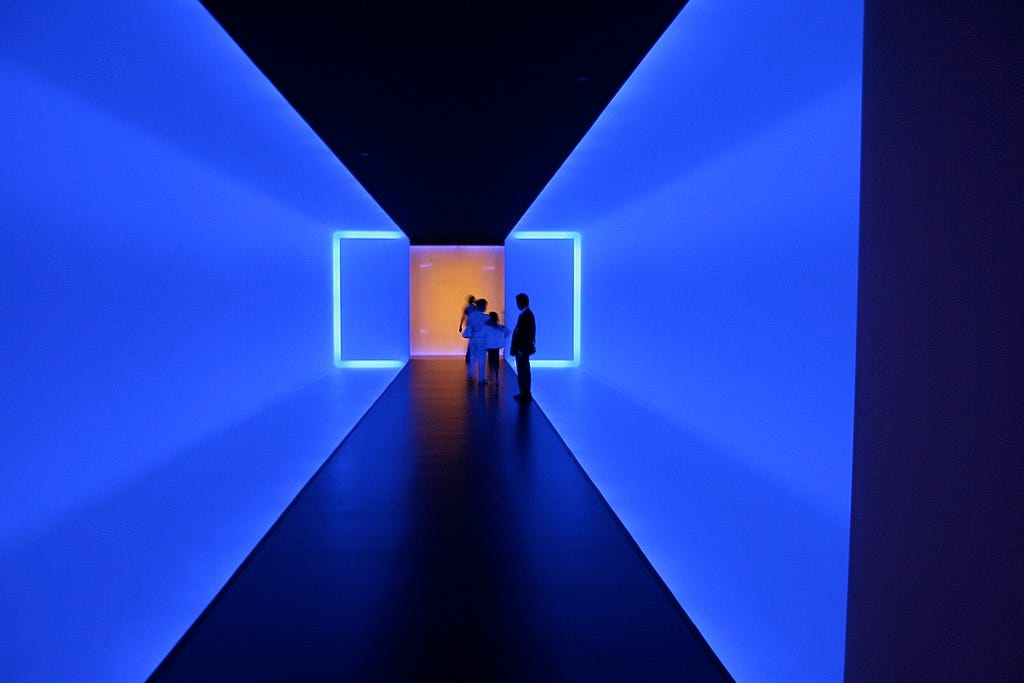10 December 2021. Illich | Art
Revisiting the radical thought of Ivan Illich | the muzak of ambient art
Welcome to Just Two Things, which I try to publish daily, five days a week. Some links may also appear on my blog from time to time. Links to the main articles are in cross-heads as well as the story.
#1: Revisiting the radical thought of Ivan Illich
There was a short period in that gap between the energy crisis of the early ‘70s and the Thatcher/Reagan ascendancy at the end of the decade when Ivan Illich was perhaps the most influential radical thinker in the world, certainly among those who worried about the impact of industrial society on the quality of our lives.
At Noema magazine the editor-in-chief, Nathan Gardels took the opportunity of the publication of a couple of books about Illich to reflect on his thinking.
Illich became influential, certainly amongst ecological thinkers, through a series of books that started withDeschooling Society and worked through Tools for Conviviality and Energy and Equity to Medical Nemesis. These challenged the way we thought about the way the institutions of the 20th century industrial state. Gardels summarises this worldview like this:
Illich was a purveyor of impossible truths, truths so radical that they questioned the very foundations of modern certitudes — progress, economic growth, health, education, mobility. While he was not wrong, we had all been riding on a train going in the opposite direction for so long that it was hard to see how, in any practical sense, the momentum could ever be stalled. And that was his point. Now that “the shadow our future throws” of which Illich warned is darkening the skies of the present, it is time to reconsider his thought.
Illich was a Catholic priest who had grown disenchanted with the church, but not with God, and when he left the church he lived ascetically in Cuernavaca, outside of Mexico City. It turns out that Gardels and his wife went to visit Illich there in the 1980s, with the former Governor of California, Jerry Brown.
Living in a poor and slightly inaccessible location was a deliberate choice.
As Illich saw it, the rise of universalizing social technologies — that is, institutions managed by strangers — transgressed the traditional bounds of diverse vernacular communities and harnessed human endeavor to a trajectory of limitless growth, creating a “radical monopoly” over the ways and means of living that blunted any alternative to industrializing the desires of consumer society.
Deschooling Society had a huge impact because it challenged almost every notion that underpinned mainstream education. Mass education prevented learning, as did the factory-like structure of schools.
But the list of books above also shows his range: education, health, transport, social structures. In Medical Nemesis he argued that the professionalism of medicine and the design of procedures of hospitals—“the brave new biocracy”—were more likely to make people unwell:
For Illich, vaccines, clean water and simple hygiene like washing hands were responsible for most health advances. But he was blistering in his critique of our medical systems oriented toward postponing the end as long as possible.
In Energy and Equity he observed that once you took into account all the time you spent to earn the money to pay for the car, your average speed was no faster then walking. He was a whole systems thinker.
I think his most sustaining thought was his idea of the “convivial society”, published in his book Tools for Conviviality.
His greatest insight was that when conviviality is swapped for productivity, monopolizing institutions that chart a singular path at mass scale become counterproductive to their original intent beyond a certain threshold. In his words, “The warming biosphere is making it intolerable to think of industrial growth as progress; now it appears to us as aggression against the human condition.”
If there’s a theme in his work, it is about the importance of the human scale. Illich took this seriously—refusing, for example, to speak at meetings whose size meant it was necessary to use a microphone to let everyone hear you.
Gardels finishes his piece like this:
We appear to be entering a new pivotal age in which the modern certitudes he so thoroughly questioned are near exhaustion, finally opening the social imagination to the kind of fundamental reconsideration that seemed so radical in Illich’s day, but no longer do.
—
(‘Ivan Illich-Isabel Augusta’, by Pedro Ribera Simoes/flickr. Calouste Gulbenkian Museum, Lisbon. CC BY 2.0)
#2: Art aspires to the condition of muzak
Ambient
At Art Review Martin Herbert discusses that type of modern art that aspires to the condition of muzak. Not that he dislikes it; in fact he finds it quite reassuring. But he’s at least as interested in why this particular style has emerged.
It’s the type of show – always in a well-appointed, high-ceilinged white cube – that makes you feel like you’re in a gallery in a Hollywood movie. The artworks in such situations tend to be replete enough with familiar genre signifiers that mainstream audiences will infer serious creativity: big, hazy, slightly anonymous abstractions... What’s on display, if that’s even the word, is visual muzak: undemanding, kind of pacifying.
Maybe that type of show isn’t that new. But he wonders if the rise of what might be thought of as ambient art, and not just in the realm of visual arts, is a sign of something larger in our culture:
(T)hat mood, acquiescence to softness and drift, is increasingly more widespread in art and culture generally... Raise your hand if you think this calculated lack of challenge to the viewer or listener might be partly related to the pandemic. It’s a variant, too, of the care imperative, considerate culture for a world that is generally hurting enough, can’t concentrate, doesn’t need another pressure, and also abhors silence – that is, being alone with your own thoughts.
—
(James Turrell, The Light Inside. Photo by Ed Schipul/flickr. CC BY 2.0)
In the visual art world, such exhibitions don’t challenge the viewers, or alienate them. There’s nothing there not to get. And that’s much of the point. Yes, this is art for the Instagram selfie, that makes people feel good enough to stop in the gift shop on the way out. But that’s not everything that’s going on here:
(T)his kind of art, that commingles entertaining qualities with some serious intent, might speak to audiences used to slaloming between information and education on social media. Plus, relatedly, there’s the notion of diffused attention, rather than focus, being a somatic register that serious visual art previously hasn’t really taken seriously – the forerunners of immersive art, like James Turrell, aside – and now, in some cases, that’s happening.
And he builds on this idea to suggest that new technologies call into play new types of attention. If the book demands that you are undistracted, digital technologies require different types of cognition:
It might be a marker of our fraught times that a significant swathe of art is recasting itself not as a training ground but a refuge, or at least a space where distributed attention can be experienced soothingly. Either way, the highest goal here is not the old model of sustained focus – art as more work for the viewer to do, no matter what the rewards. It is, so to speak, chilling.
j2t#225





